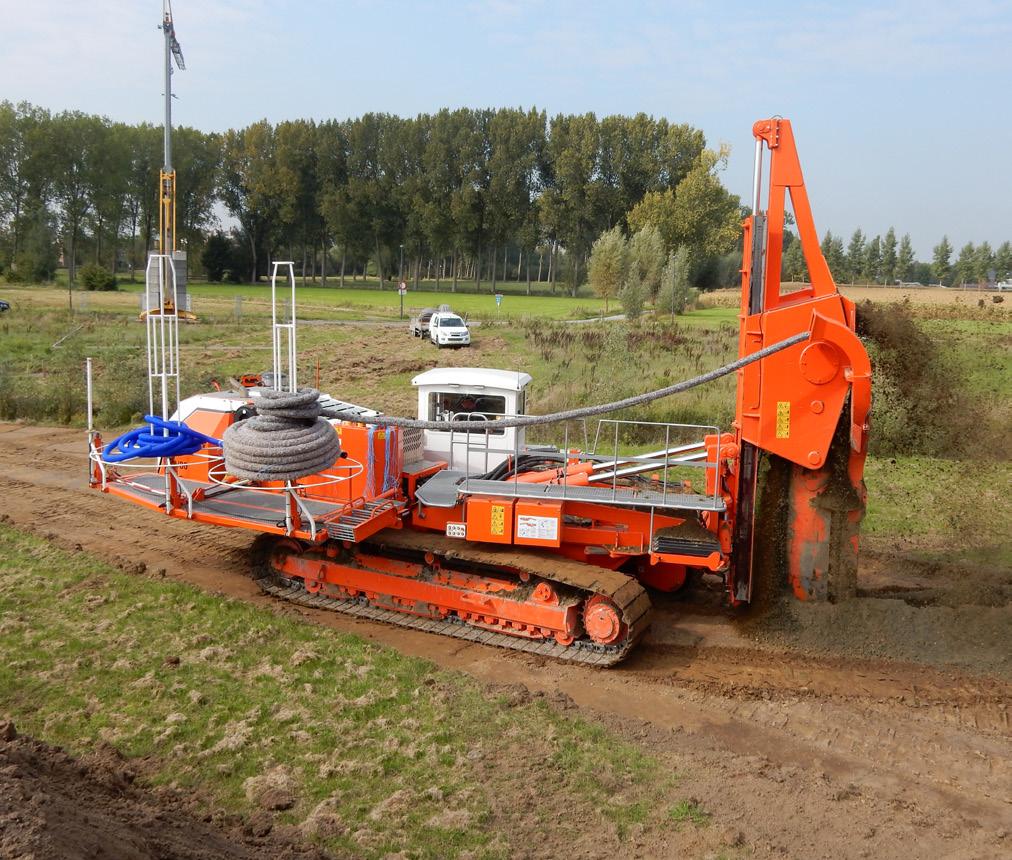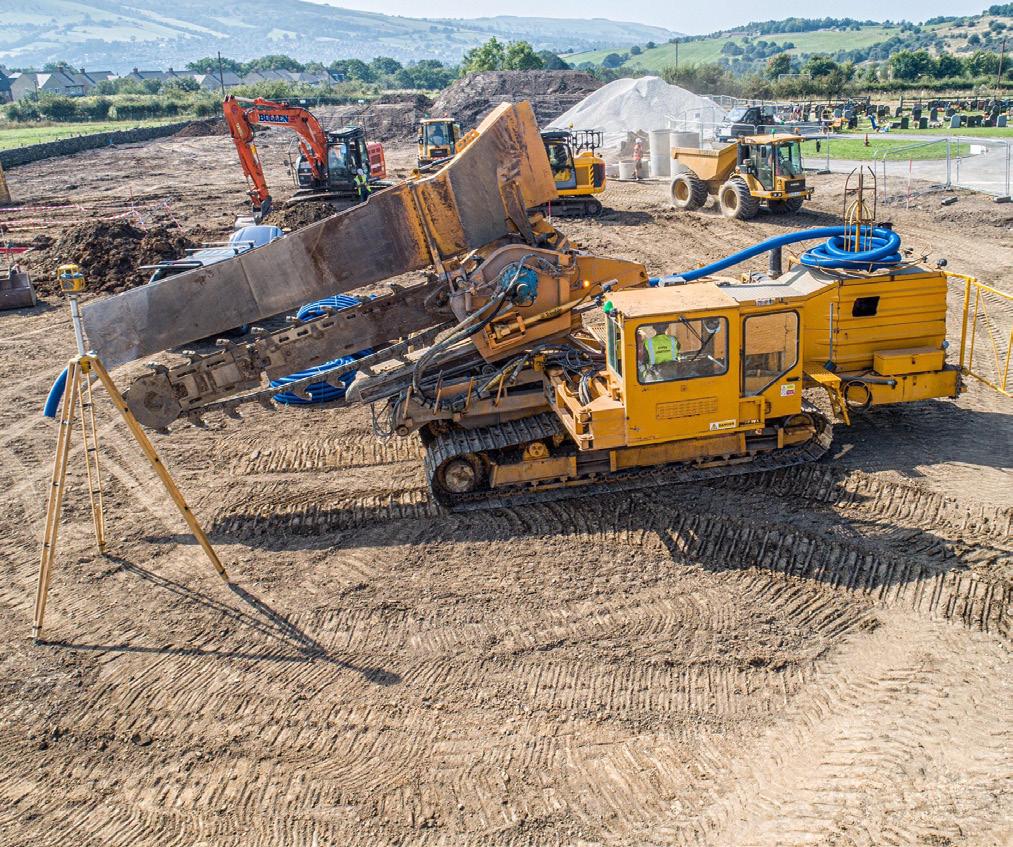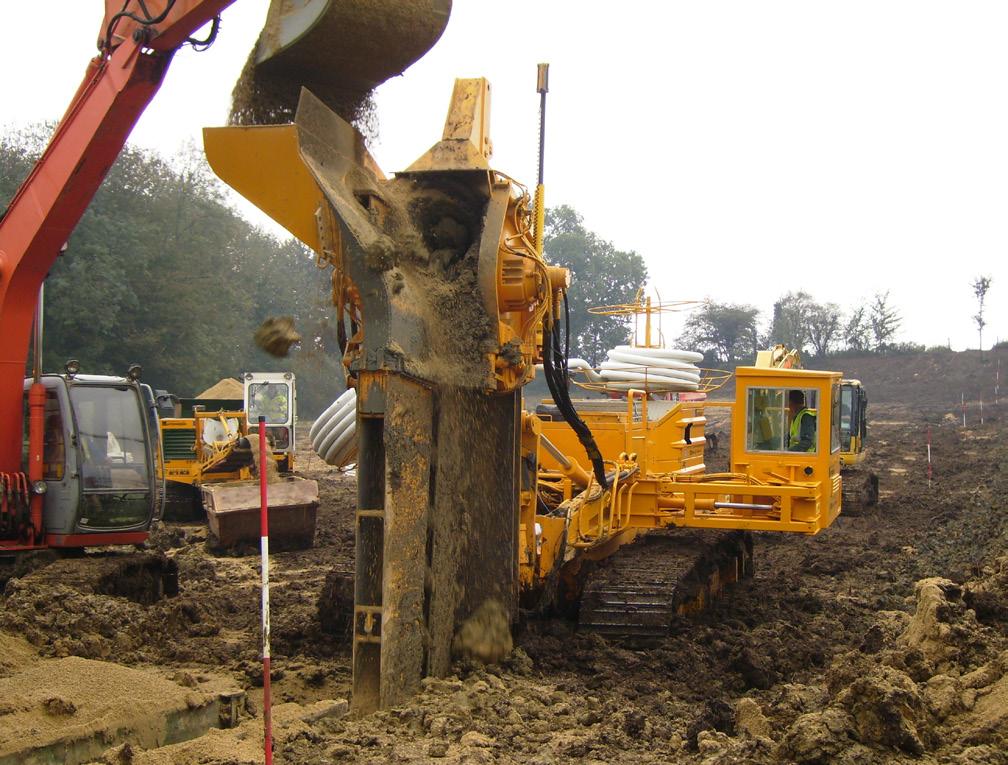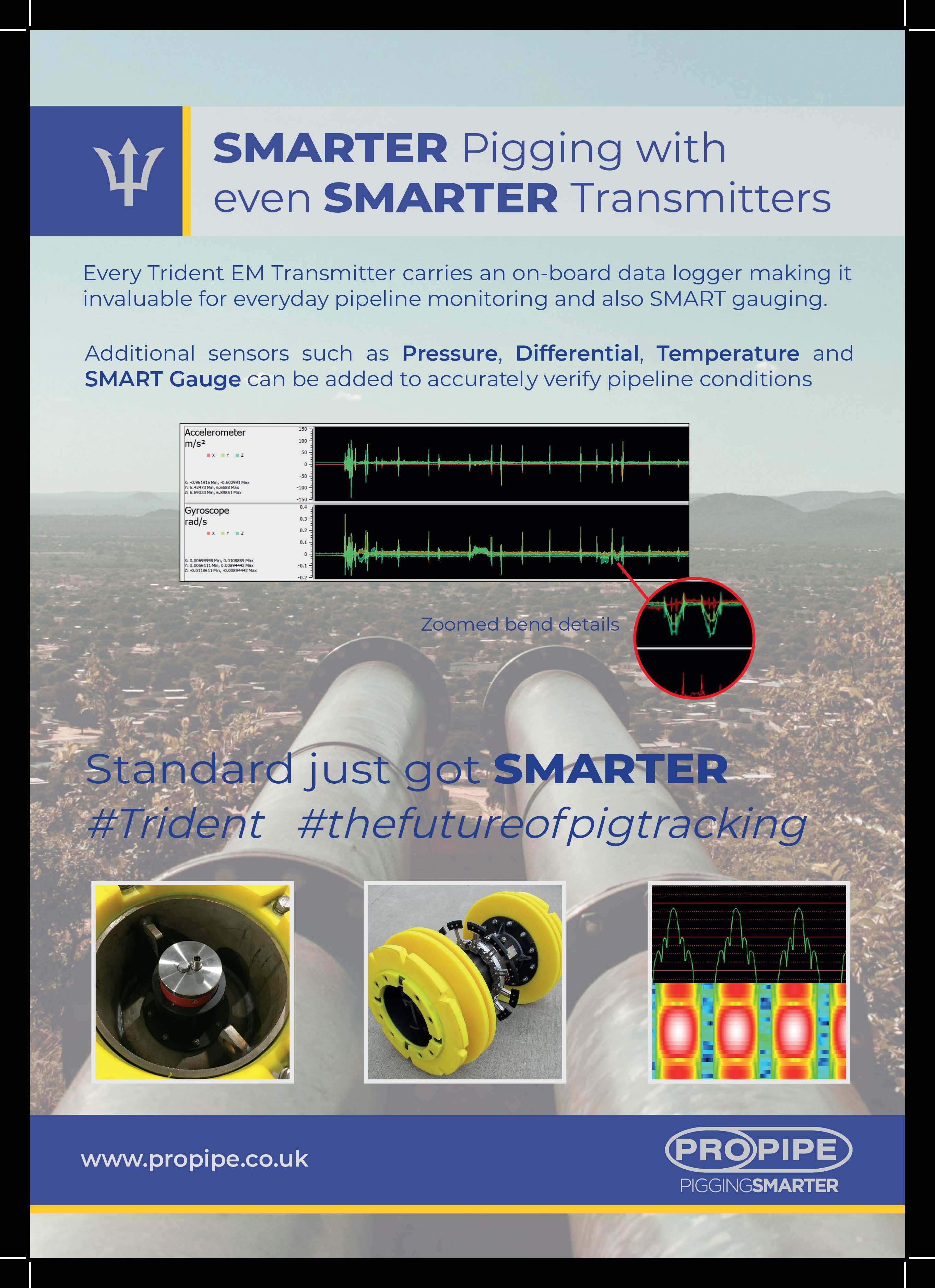
6 minute read
The rising case for horizontal dewatering
Despite being quicker and cheaper than well point drilling, many UK contractors ignore horizontal dewatering, Matt Hammerton, Managing Director, Mastenbroek, UK, believes things are about to change.
Established in 1977, Mastenbroek has carved out an enviable reputation for designing and manufacturing a range of self-propelled trenchers that are deployed in construction and pipeline projects, agricultural drainage, subsea cable laying. The company, which is based in Boston, Lincolnshire, UK, designed its first deep trencher at the request of Heerschap Drainage Netherlands in 1983, which had various projects which necessitated the water table to be lowered below the capabilities of their regular drainage trenchers. Unlike its competitors, which were opting to convert drainage trenchers into deep trenchers, Mastenbroek decided to design a new machine from the ground up, so to speak. The solution – the Mastenbroek range of deep trenchers have proven popular both in

Figure 1. Mastenbroek model 70/80 installing horizontal dewatering in Belgium.
Figure 2. Popes Hightown using a Mastenbroek trencher in Macclesfield, Cheshire, UK.
Figure 3. Mastenbroek has developed a vertical digging mechanism. the Netherlands, the UK and across Europe, especially in Benelux and Germany where high water tables in alluvial soils are common. The combination of soil type and high water tables can make it almost impossible to excavate an open trench as the soil simply collapses into the channel.
There are some situations where well point drilling is the preferable option, particularly when the water table needs to be lowered more than 6 m beneath the surface. However, above 6 m Mastenbroek believes horizontal dewatering is the best approach.
“We believe that the process we have pioneered offers the optimal solution to dewatering,” says Christopher Pett, Commercial Director at Mastenbroek. “With well point drilling, contractors need to bore holes every 5 - 6 m and install surface pipes to remove the ground water, which restricts the movement of plant and machinery around the job site. Not only is this approach time consuming, but it is also more expensive than horizontal dewatering.”


A different approach The Mastenbroek approach uses its range topping model 70/80 deep trencher to install perforated pipe to a controlled depth and grade at up to 8.5 m below the surface. A surface pump connected to the pipe is used to extract the water for offsite storage or dispersal. By incorporating a hopper into the 70/80, sand or gravel filtrate can be simultaneously installed into the channel over the dewatering pipe.
Speed Mastenbroek believes that many hundreds of metres of pipe can be laid each day when the 70/80 is deployed in optimal conditions. By incorporating three multi-coil pipe reels and a working platform on the machine, operators can easily connect pipe coils without delaying the trenching process.
Robustness As well as speed, Mastenbroek’s engineers have invested considerable time developing a robust and accurate digging mechanism.
As noted earlier, some manufacturers opted to convert drainage trenchers into deeper trenchers. This is inherently weaker than Mastenbroek’s approach and has been known to pull the pipe installation chute away from the digging mechanism when working in challenging conditions.
Mastenbroek’s approach utilises a vertical digging mechanism powered by a Hägglunds hydrostatic drive motor, with a vertical sliding mast to automatically control the trench depth and grade.
The Hägglunds hydrostatic drive motor was first used in rock and subsea trenchers and was incorporated into Mastenbroek’s deep trenchers in 2010.
Its digging chain has step-less adjustable speed so it can cut through various soil conditions. A 2.7 m hydraulic cylinder extension in the digging boom, combined with the 3.4 m vertical mast movement, enables the trench depth to be adjustable from minimum 2.4 m to maximum 8.5 m.

The contractor’s view As a contractor, Popes Hightown Limited is regularly asked to install drainage schemes and provide dewatering services for pipeline installations, road construction and housing developments.
In the 1990s, Colin Pope and his team attempted horizontal dewatering with an extended boom and box, which they found to be quicker and cheaper than previous methods. However, the approach stressed out both the machine and the team, with frequent breakdowns costing Pope Hightown a substantial amount.
“In 1998, we decided to invest in a purposemade Mastenbroek dewatering machine which goes from 2 - 6 m and ticked all the boxes for us,” says Colin. “Since then, horizontal dewatering has become a method we use with complete confidence, although uptake of horizontal dewatering does seem slow in the UK.
“We have found horizontal dewatering to be ideally suited for many road construction contracts and housing developments. As well as being very cost-effective, the technique offers the advantage of having room for works to continue after installation, as overground pipework was at a minimum as the machine’s design gives us the option of offsetting the pumps required.
“In all honesty, horizontal dewatering isn’t ideally suited for rocky conditions, but for a 200 m section where there is variation in soil types – clay, sand or peat – it is very good.
“With horizontal dewatering, you have a continuous pipe through all areas with a permeable backfill which catches the pockets of water, which is then pumped away.
“In our view and experience, horizontal dewatering is the way forward for so many pipelines and construction projects in general.”
Popes Hightown Established over 50 years ago, Popes Hightown Ltd is a family-owned business based in Hightown, Merseyside, UK.
The company is unique because it offers specialist horizontal dewatering services alongside the design and installation of drainage schemes for agricultural and construction projects. As well as drainage solutions, Popes
Hightown has undertaken several major gas, water and oil pipeline installations. Positioning When operating, the digging mechanism must be vertical. Any movement fore or aft, left or right, can place immense pressure on the mechanism and lead to catastrophic failure. Mastenbroek has overcome this by developing hydraulic cylinders to create a gimble to ensure the digging mechanism remains vertical. The verticality of the trenching mechanism is automatically maintained according to machine pitch and roll with a side tilt correction of 10˚ each side of vertical. The entire trenching mechanism will slew 12˚ each side of centre to allow curved trenching and to enable the machine to reach dewatering pumps outside the working strip.
Accuracy As well as the gimble, Mastenbroek has also refined the accuracy of its 70/80 machine. The use of lasers to control and maintain the correct trench depth and gradient in undulating topography has been deployed for some time. In the last five years, though, GPS has been pioneered in dewatering, providing more flexibility with machine control and survey and design.
Collaboration Mastenbroek has a close working relationship with Trimble®, the hardware and services technology company which has led the way in developing GPS-based solutions for agriculture and construction companies. In 2010, the two companies worked in partnership to develop a GPS system for agricultural drainage trenchers.
Another recent enhancement to the 70/80 is the presence of Volvo EU stage five emission engines, which feature a highly advanced exhaust after-treatment system, based on SCR technology, uncooled EGR and a diesel particulate filter.
For working in confined areas, Mastenbroek has given the operator the ability to retract the cabin, undercarriage and pipe reels, and the 70/80’s heavy-duty, oscillating undercarriage provides excellent traction on undulating surfaces and low ground bearing pressure soils.
“Adding the stage five engines to our 70/80 not only improves its performance and efficiency, but it also reduces its emission levels which is something our customers have welcomed. Like every machine we manufacture, we have listened to our customer base, taken their feedback into account, and included it in every machine we produce.
“Unlike some other manufacturers, all of our horizontal dewatering trenchers are bespoke to the contractors’ needs. This means they receive a machine that offers optimal performance as it has been designed for that specific contractor and its unique work methods.
“Our customers operating in Benelux and northern Europe have really bought into our approach, and we are starting to see UK contractors realise the benefits of deploying bespoke horizontal dewatering trenchers,” concludes Christopher.










